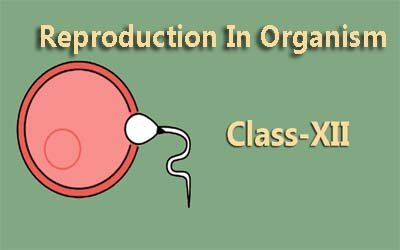Plant Growth And Development - Class 11
Plants don't just sprout and magically grow! They go through a fascinating process called plant growth and development, which is all about how they increase in size and complexity. This journey is influenced by both internal factors, like special plant hormones, and external factors, like the amount of sunshine they get. Here's a quick look at what you'll discover in Plant Growth and Development for Class 11: The Growth Engine: Meristems Imagine tiny factories inside a plant. These are meristems, regions packed with cells that constantly divide, creating new cells for growth. They're located at the tips of roots and shoots, like little building crews constantly expanding the plant. Two Types of Growth: Lengthwise Stretch: This is primary growth, driven by meristems at the tips, making the plant shoot up and roots dig deeper. Getting Thicker: Secondary growth involves special sideways-growing meristems that add layers of woody tissue, making the plant stronger and wider. Hormonal Control Center Plants don't have brains, but they use chemical messengers called hormones to control growth. Auxin, for example, helps stems grow tall, while other hormones influence root development, leaf growth, and even when leaves fall off. The Environment Matters Light, temperature, and water availability all play a big role in how plants grow. Sunlight fuels photosynthesis for energy, while the right temperature keeps things running smoothly. Water is essential for everything from keeping cells plump to transporting nutrients. From Seed to Plant The journey starts with seed germination, where a tiny seed breaks open and starts to grow into a seedling under the right conditions. Plants can even respond to the day/night cycle (photoperiodism) to know when to flower! গাছপালা কেবল অঙ্কুরিত হয় না এবং জাদুকরীভাবে বৃদ্ধি পায় না! তারা উদ্ভিদের বৃদ্ধি এবং বিকাশ নামে একটি আকর্ষণীয় প্রক্রিয়ার মধ্য দিয়ে যায়, যা কীভাবে তারা আকার এবং জটিলতা বৃদ্ধি করে সে সম্পর্কে। এই যাত্রাটি উদ্ভিদের বিশেষ হরমোনের মতো অভ্যন্তরীণ কারণ এবং সূর্যালোকের পরিমাণের মতো বাহ্যিক কারণ উভয়ের দ্বারা প্রভাবিত হয়। ক্লাস 11-এর জন্য উদ্ভিদ বৃদ্ধি এবং বিকাশে আপনি কী আবিষ্কার করবেন তা এখানে একটি দ্রুত চেহারা দেওয়া হলঃ বৃদ্ধির ইঞ্জিনঃ মেরিস্টেমস একটি কারখানার ভিতরে ছোট ছোট কারখানার কথা কল্পনা করুন। এগুলি মেরিস্টেম, কোষ দ্বারা পূর্ণ অঞ্চল যা ক্রমাগত বিভক্ত হয়, বৃদ্ধির জন্য নতুন কোষ তৈরি করে। এগুলি শিকড় এবং অঙ্কুরের ডগায় অবস্থিত, যেমন ছোট বিল্ডিং ক্রুরা ক্রমাগত উদ্ভিদটি প্রসারিত করে। দুই ধরনের বৃদ্ধিঃ দৈর্ঘ্যের দিকের প্রসারঃ এটি প্রাথমিক বৃদ্ধি, যা অগ্রভাগে মেরিস্টেম দ্বারা চালিত হয়, যার ফলে উদ্ভিদটি অঙ্কুরিত হয় এবং শিকড়গুলি আরও গভীর খনন করে। পুরু হওয়াঃ গৌণ বৃদ্ধিতে বিশেষ পার্শ্ব-ক্রমবর্ধমান মেরিস্টেম জড়িত থাকে যা কাঠের টিস্যুর স্তর যুক্ত করে, উদ্ভিদকে আরও শক্তিশালী এবং প্রশস্ত করে তোলে। হরমোন নিয়ন্ত্রণ কেন্দ্র উদ্ভিদের মস্তিষ্ক নেই, তবে তারা বৃদ্ধি নিয়ন্ত্রণ করতে হরমোন নামক রাসায়নিক বার্তাবাহক ব্যবহার করে। উদাহরণস্বরূপ, অক্সিন কান্ডগুলিকে লম্বা হতে সাহায্য করে, অন্যদিকে অন্যান্য হরমোনগুলি শিকড়ের বিকাশ, পাতার বৃদ্ধি এবং এমনকি পাতা পড়ে যাওয়ার সময়ও প্রভাবিত করে। পরিবেশের বিষয়গুলি উদ্ভিদের বৃদ্ধিতে আলো, তাপমাত্রা এবং জলের প্রাপ্যতা সবই একটি বড় ভূমিকা পালন করে। সূর্যালোক শক্তির জন্য সালোকসংশ্লেষণে ইন্ধন যোগায়, অন্যদিকে সঠিক তাপমাত্রা জিনিসগুলিকে মসৃণভাবে চলতে রাখে। কোষগুলিকে মোটা রাখা থেকে শুরু করে পুষ্টি পরিবহণ পর্যন্ত সবকিছুর জন্য জল অপরিহার্য। বীজ থেকে গাছে যাত্রাটি শুরু হয় বীজের অঙ্কুরোদগমের মাধ্যমে, যেখানে একটি ক্ষুদ্র বীজ ভেঙে যায় এবং সঠিক পরিস্থিতিতে একটি চারায় পরিণত হতে শুরু করে। গাছপালা এমনকি দিন/রাতের চক্রের (ফটোপেরিওডিজম) প্রতি সাড়া দিয়ে জানতে পারে যে কখন ফুল ফোটে!
English
Last updated
Wed, 27-Nov-2024



















